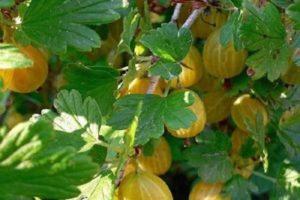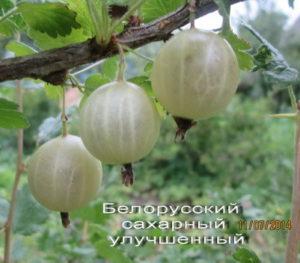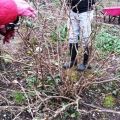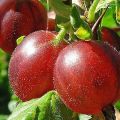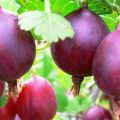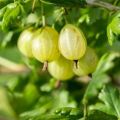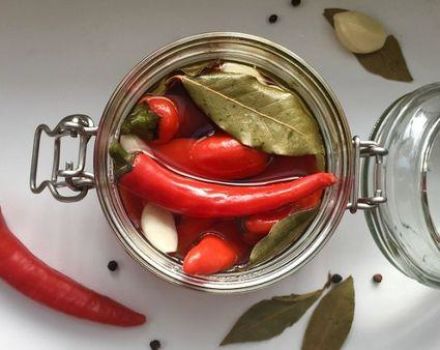Description and subtleties of growing Olavi gooseberries
Olavi gooseberry is a Finnish variety bred specifically for the northern regions. Thanks to its frost resistance and unpretentiousness, the berry culture fell in love with many gardeners. Before purchasing a unique high-yielding variety, you should study in detail its characteristics, planting and care features in order to get the desired result.
Description and characteristics of gooseberry Olavi
Finnish breeders have tried and bred Olavi gooseberries. The versatile variety is characterized by frost resistance and yield.
Medium-sized bushes of the plant have a dense crown. Stems are straight, covered with thorns. Young shoots are colored green, after lignification they acquire a light gray tint. The plant is decorated with green foliage of 3-5-lobed shape. The sheet plate has a glossy surface with large denticles at the edges.
Olavi gooseberry fruits are round in shape, their weight does not exceed 4.5 g. The thin skin is dark red, has a waxy coating. The pulp has a juicy and refreshing taste that harmoniously combines acidity and sweetness.
Advantages and disadvantages
Olavi's gooseberry has a lot of undeniable advantages, which confirm the need to acquire this shrub in the garden:
- productivity, one bush gives from 7 to 13 kg of fruits;
- excellent taste (4.5 out of 5 points);
- the ability of the plant to withstand a drop in temperature to -30 degrees;
- self-fertility, which allows you to get the ovary without pollinators;
- non-susceptibility to falling, the berries do not crumble until the cold weather, while retaining their taste and presentation;
- resistance to many diseases and pests;
- the versatility of berries;
- transportability of the crop, which is not damaged or deformed during long-term transportation;
- the safety of fruits in room conditions for 3 days and in the refrigerator for 7 days.
For proper cultivation, it is important to take into account the negative aspects of the variety:
- the presence of thorny thorns;
- small fruit size.
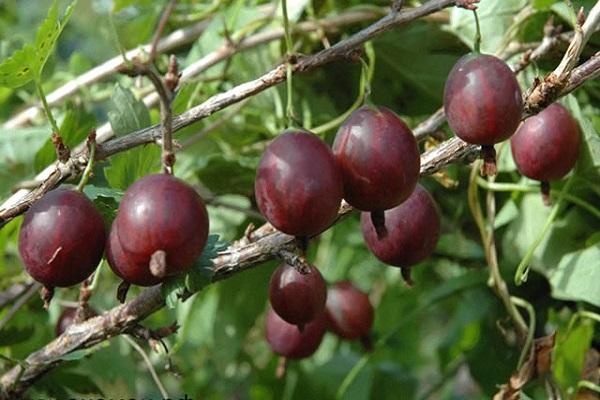
Features of growing crops
Planting work is recommended in the spring before bud break and in the fall in the last days of September.
Seat selection
Olavi's gooseberry is best allocated an open area, protected from cold winds.Groundwater close to the soil surface will negatively affect the development of the culture, since it does not tolerate waterlogging.
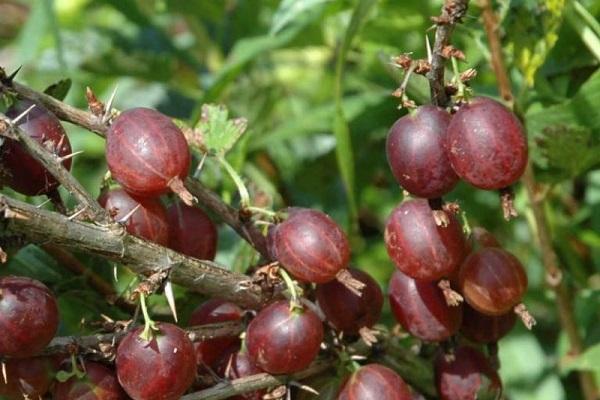
Preparation of planting material
It is important to choose high quality planting material. To do this, pay special attention to the appearance of the Olavi gooseberry seedling and its root system. If the buds are healthy, the leaves are without pigmentation, and the bark of the branches has a fresh look, then this bush will fully develop.
Advice! Before planting Olavi gooseberries, place the root system of the plant in a special solution of sodium humate for 24 hours. With this procedure, the seedling will quickly take root..
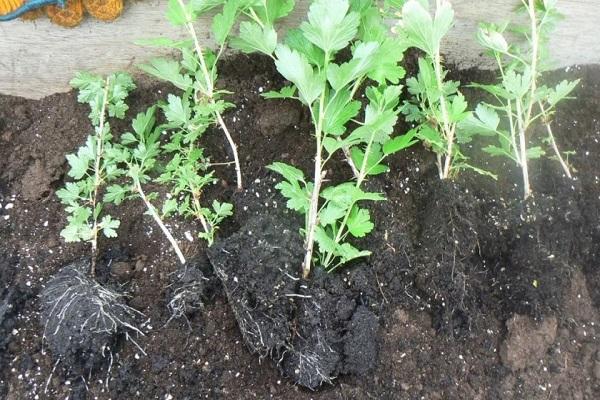
Landing rules
When planting gooseberry seedlings of the Olavi variety, carry out the following algorithm of actions:
- Make a hole no more than 50 cm deep.
- Send the prepared seedling into the hole and set at a right angle.
- Gently spread the root system by adding and compacting the soil.
- Water the plant abundantly, get rid of unnecessary shoots, leaving only 6 living healthy buds so that the shrub does not waste its energy on the formation of many shoots.
- Mulch the soil in the root zone with peat or humus to accelerate growth and formation.
Correct planting of Olavi gooseberry seedlings will be a good help for growing berry crops.
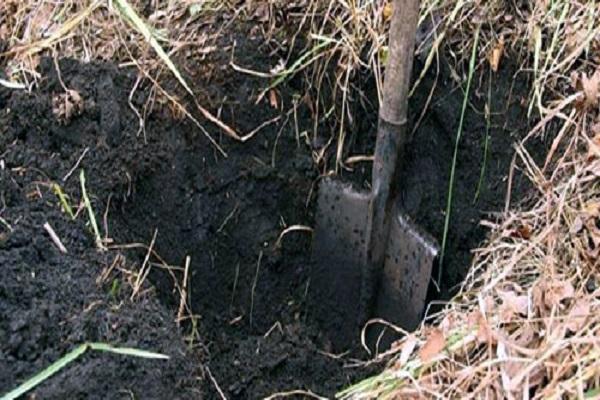
Variety Care Tips
To achieve a high quality harvest, all plant care requirements should be considered.
Watering and feeding
Watering at the root to protect the plant from fungal infections. The water should be warm and clean, cold liquid can slow down the growth and development of the root system.
The first time you need to fertilize after the formation of the first leaves, the subsequent feeding should be carried out at the time of flowering and how the fruits are formed. Use potassium sulfate and a special preparation "Berry" diluted in a ratio of 1: 2 as fertilizers.
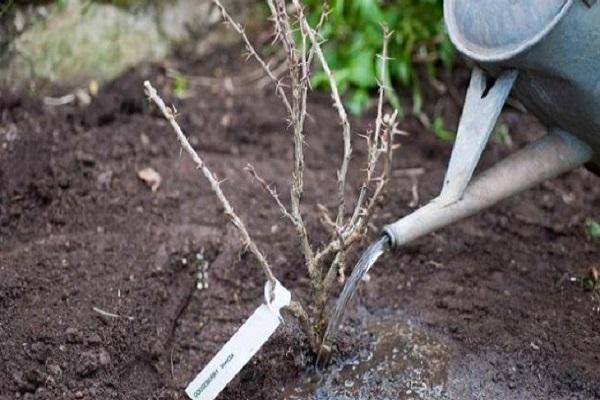
Pruning and shaping the bush
The Olavi gooseberry variety needs to be pruned annually before wintering. As needed, crown formation can be carried out throughout the season, getting rid of dry and diseased branches.
Preparation for wintering
Before wintering, carry out a sanitary full pruning. The frost-resistant gooseberry variety Olavi does not need shelter for the winter. Till the near-stem soil and sprinkle it with sawdust or dry peat. If the shrub is still young or just planted, you should tie it with twine and tilt it to the ground, then cover it with non-woven fabric for the winter.
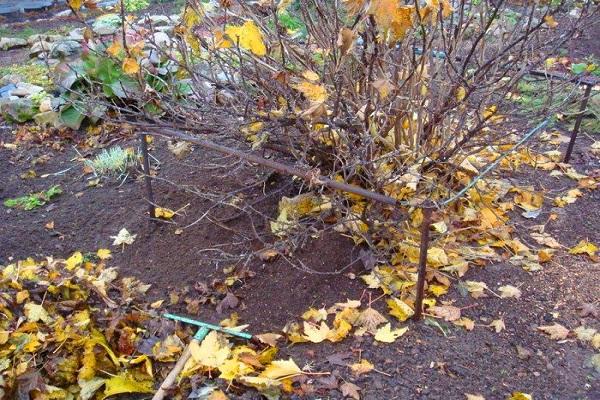
Protection against diseases and pests
Olavi gooseberries rarely suffer from diseases. Fungal infections settle on the plant in case of sudden changes in temperature and high humidity. The main symptom of the disease is a gray film on unripe fruits. The problem can be solved with the help of a chemical preparation "Topaz" or "Oxyhom".
Harmful insects settle on Olavi shrubs more often. The main enemy that poses a threat to culture is aphids. Fighting it involves spraying the plant with soapy water, disposing of anthills.
Advice! It is not recommended to plant a crop near a large concentration of ants.

Collecting and storing the gooseberry crop
The Olavi gooseberry variety is distinguished by an insignificant number of thorns with sharp ends in the root zone, so the collection will not be difficult, but it is still worth using gloves. Harvesting is better in the evening or in the morning, as the dew melts. Ripe berry can be easily removed.
If it is still green, you will have to make an effort to pluck it, because the stalk is strong and strong.
Olavi gooseberries are stored for 3 days outdoors in the shade. By placing the crop in the refrigerator, the shelf life can be extended to 7 days in a sealed container.To preserve the gooseberry until winter, you can freeze it, while it will not lose its beneficial properties and remain tasty.
